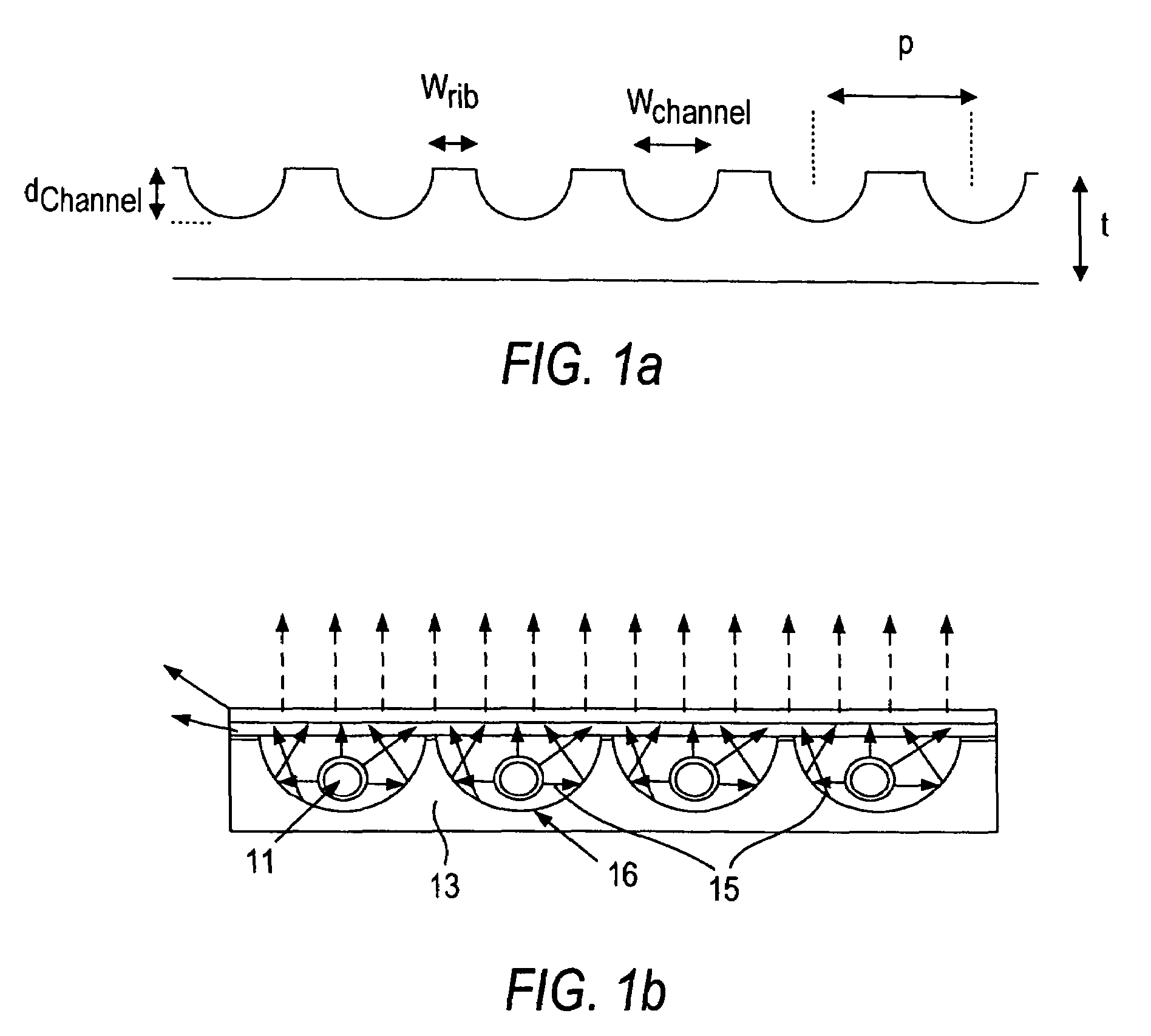Glass for an EEFL fluorescent lamp, process for making the glass and devices including articles made with the glass
a technology of fluorescent lamps and glass, applied in the direction of glass making apparatus, discharge tube luminescnet screens, manufacturing tools, etc., can solve the problems of affecting the use of the entire product, affecting the quality of the product, and the mercury line at 313 nm being especially damaging to the emission line, etc., to achieve the effect of reducing absorption, high purity and increasing glass production costs
- Summary
- Abstract
- Description
- Claims
- Application Information
AI Technical Summary
Benefits of technology
Problems solved by technology
Method used
Image
Examples
examples
[0060]Exemplary glasses of the invention and comparative glasses of the prior art set forth in the following Tables Ia and Ib were melted and refined under oxidizing conditions, as described above with As2O3. The UV absorption, visible transmission and other properties of the glass were measured and are tabulated in Tables IIa and IIb. In these tables the examples of the invention are numbered with integers and the comparative glasses of the prior art are numbered with primed numbers, e.g. 6′. The compositions are in % by weight on an oxide basis.
[0061]The measurements of the transmission occurred with glasses, which were very rapidly cooled, i.e. without fine annealing. The UV cutoff can be further shifted into the visible range by fine annealing, or subsequent short time temperature fine annealing and / or subsequent short-time temperature treatment.
[0062]
TABLE IaGLASS COMPOSITIONS OF THE INVENTION ANDCOMPARATIVE COMPOSITIONSActual ingredientadded to batch,6′7′8′if different12345Com...
PUM
| Property | Measurement | Unit |
|---|---|---|
| thickness | aaaaa | aaaaa |
| thickness | aaaaa | aaaaa |
| thickness | aaaaa | aaaaa |
Abstract
Description
Claims
Application Information
 Login to View More
Login to View More - R&D
- Intellectual Property
- Life Sciences
- Materials
- Tech Scout
- Unparalleled Data Quality
- Higher Quality Content
- 60% Fewer Hallucinations
Browse by: Latest US Patents, China's latest patents, Technical Efficacy Thesaurus, Application Domain, Technology Topic, Popular Technical Reports.
© 2025 PatSnap. All rights reserved.Legal|Privacy policy|Modern Slavery Act Transparency Statement|Sitemap|About US| Contact US: help@patsnap.com



